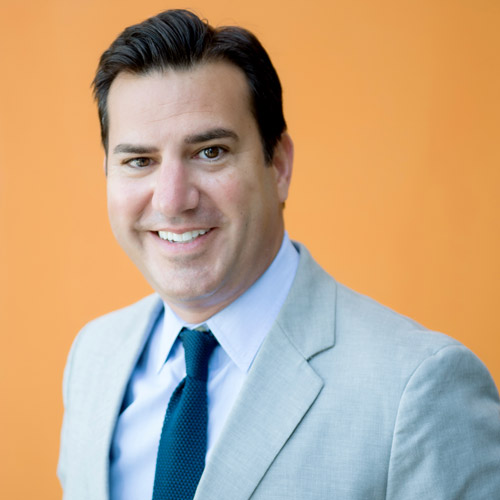If you’ve stepped into any building in the past century, chances are you’ve seen USG Corporation’s work. As an innovator of wall, floor, and ceiling construction products, USG has been at the forefront of the industry since the invention of its patented drywall in 1912. American Builders Quarterly recently sat down with Philip Petti, chief intellectual property counsel, to discuss the challenges and the importance of the behind-the-scenes work involved in protecting a company’s intellectual property.
Can you tell us a little more about your position and what it involves?
My responsibilities are to protect our intellectual property (IP) worldwide—that includes our inventions, our brands, and the creative work that we do. My group also is responsible for reviewing new products and trademarks to make sure that we’re not conflicting with other people’s IP rights. For example, if someone says, “We might have a conflict with another company’s patent,” we would be responsible for addressing that concern and making recommendations on how to best go forward.
If someone were to infringe on our intellectual property rights, we take the lead on analyzing that situation and, if necessary, head the litigation effort from the in-house aspect.
Do you find that more of your work is on the “defensive” side of protecting USG’s brands or are you more “preventative”?
We spend a lot of time defending our brands, but we probably spend more time protecting our IP up front—it’s the most strategic part of what we do. When a lot of business managers look ahead, they’re looking at the next three to five years. We’re looking 10–15 years out for our IP protections. In fact, some of the things that we protect last much longer than 20 years—such as trade secrets that are very valuable for a long time. We have to make sure that those trade secrets are protected as well as our newest technology.
What would be an example of that type of strategy in your work?
For our new products, we may file patent applications in the US and then work with our business leaders to decide where we should file for international patents. Once we plan on where we’re going to file, we reach out to outside law firms to make sure that the protection we get in, say, Asia, is the maximum available protection. So, we regularly work with expert patent lawyers from all over the world to develop the best patent protection in each of their countries. It’s very expensive to get that level of protection, so we have to constantly work to make sure that what we have done with our patent portfolio—here in the US and internationally—complements USG’s business plans.
What is the challenge of getting a patent in a country such as Australia versus one in the United States?
Many of the basic ideas about patents and patent law area are pretty well accepted worldwide. However, how different countries carry out those ideas can be very different. In the US, the focus is on allowing protection that captures your invention—even if it is not perfectly described in your patent application—as long as skilled people in the field will understand your invention. In other countries, like some in Asia, the patent laws can be much more restrictive. At times, you only may be able to protect what is exactly described in your application.
Have there been any particular projects that have posed a challenge to your team?
We had an opportunity to work with Boral, an Australian-based company with a strong foothold throughout Australasia, Asia, and India. Boral’s strength was very good manufacturing and distribution, but their technology base had not been updated in quite a while. Boral was interested in working with USG because we have the most current technology, and we were interested in expanding our business geographically. So we formed a joint venture where Boral put in all of its business and we put our technology, money, and our businesses in Asia and the Middle East.
We had to negotiate not only the licenses that allow our joint venture to use USG’s technology, but we also had to help develop a value for that technology: What is it worth to take wallboard technology or a ceiling technology to a new territory that hasn’t seen it before? How much profit can you generate because you’re bringing new technology in rather than selling standard stuff? We worked very closely with our finance group and an outside consulting group to develop the case as to why USG’s technology is worth a lot of money. And that technology is really proving its value for our joint venture.
When it comes to that kind of partnership, how much leeway is there in terms of intellectual property sharing?
We’re really careful about that. There’s a lot of value tied up in developing USG’s technology, so we have a responsibility to our shareholders and to the employees of the company to make sure that, if we’re going to share something, we get fair value for what we’re sharing.
What has become a challenge for us is: how do we ensure that when we take new technology to a plant—whether it be in China, in Malaysia, or wherever—it won’t show up in a competitor’s plant overnight? We put a lot of emphasis on the layers of protection around our IP, but you can never get 100 percent protection—there’s always the risk that some things will leak. We work to keep that risk to a minimum.

How hard has it been to protect the brand given the rapid changes in technology?
With today’s technology, a lot of people can copy our brands and packaging designs a lot faster than they could in the past. Internationally, our biggest litigation issue has been the bucket label design on our joint compound. Competitors knocked off the entire design and look of our buckets. Technology allows that to happen a lot faster and easier—they can make it look ours on the outside, but the stuff on the inside is not a good product.
I think everybody knows that Gucci purses get knocked off, that Nike shoes get knocked off, but who would think that wallboard “mud” would get knocked off? And the reason we’re getting knocked off is that we make one of the best products in the world.
How do you protect the brand for 20 years down the line when in five years technology will be much better than it is now?
It requires a lot of vigilance on our part, for branding in particular, to make sure we stay as far as we can ahead of companies that are infringing on our IP. We need to look for different ways to identify when we have a knockoff in any of our markets. We need to continue to improve our relationships with countries, authorities, and lawyers in countries where IP violations are a big problem. We also need to continue adding our voice to the voices of other businesses to encourage countries that have weak IP rights laws to improve them.
There is a lot of tension right now in many parts of the IP field, and part of my job is to not only be aware of those tensions, but to also work out strategies for protecting our technology and our brands that will take into account each new development in IP law here and throughout the world.
Plan to Win
USG Corporation has integrated a “Plan to Win” strategy, which focuses on strengthening its core, diversifying its earnings through emerging markets, and differentiating through innovation. Philip Petti shares some of the ways USG carries out this strategy:
1. LEAD THE PACK
“In terms of strengthening our core, we focus on being the best-in-class in wall systems, ceiling systems, and floor systems.”
2. OFFER THE WHOLE PACKAGE
“Our emphasis, for example, on exterior sheathing and roof boards gets us outside the building. But our push is to look at the whole building instead of pieces of the building, like just the walls.”
3. CONTINUE TO INNOVATE
“Our researchers spend part of their time envisioning the future—what will buildings look like in 15 years? The exploratory element is risk-taking, but we put enough money into the risky stuff to make sure that we’ll continue to be a leader in our field of cutting-edge technology.”


